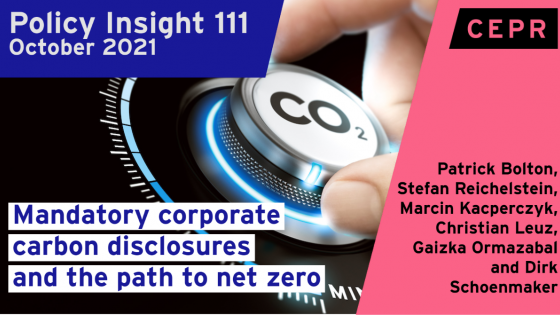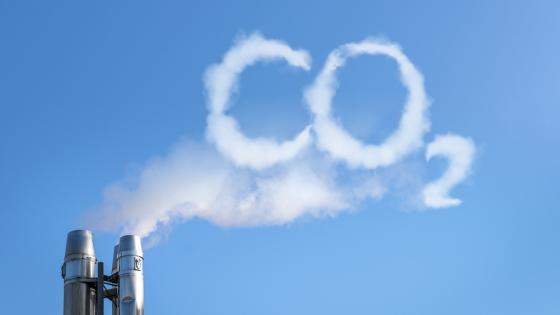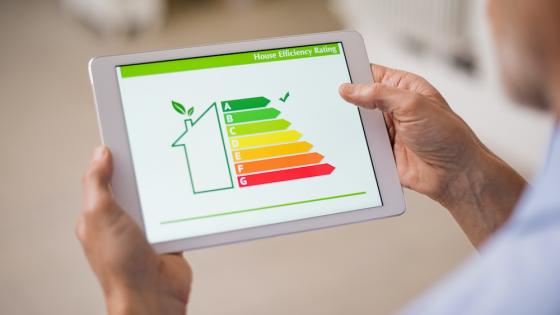The pathway to a global economy with net zero carbon emissions is narrowing by the day and its success depends on a universal and ambitious drive to eliminate or capture carbon emissions by governments, corporations, financial institutions, and households. The drive to reduce, and ultimately eliminate, carbon emissions begins with the mundane tasks of annual measuring and reporting. However, despite significant progress in the methodology for measuring and reporting corporate carbon emissions, the overwhelming majority of publicly listed companies around the world still do not disclose their carbon emissions, and even fewer privately held companies do so. Also, as pointed out in a recent article in The Economist, the current voluntary disclosures lack a coherent measurement and reporting framework: “Firms disclose reams of irrelevant puffery, while often failing to reveal the few things that matter. Ideally, an asset manager would be able to work out the carbon footprint of their portfolio and how it may change over time. But many firms failed to disclose their emissions rigorously and often the measures made public by individual firms overlap, leading to double-counting when you add them all up” (The Economist 2021).
In anticipation of the upcoming COP26, in a new CEPR Policy Insight we argue that mandatory carbon disclosures can make an elementary but essential contribution to the global drive towards a net zero economy (Bolton et al. 2021). Such mandates can deliver much of what policymakers and asset managers need to manage carbon transition risk, and perhaps more importantly, to accelerate the pace of future carbon emission reductions. We argue that such carbon disclosure mandates ought to be simple and straightforward, and that the reported information be verifiable. A common methodology to measure and report greenhouse gas emissions has been established through the International Greenhouse Gas Protocol. This protocol envisions firms measuring their carbon footprints by including all direct (scope 1) and indirect (scope 2 and 3) emissions. The latter comprise the upstream emissions associated with a firm’s operations and the entire supply chain of production inputs, as well as downstream emissions associated with the use of products sold by the firm. Our recommendation entails a mandate for reporting direct emissions.
Several important initiatives to promote the reporting of carbon emissions have already been underway for the past few years. Under the leadership of Mark Carney and Michael Bloomberg, the Financial Stability Board has established the Taskforce on Climate-related Financial Disclosures (TCFD) to consult institutional investors and companies on how to effectively report firm-level climate-risk exposures. Another initiative is the Sustainability Accounting Standards Board (SASB), which has a broader aim of defining industry-specific standards to guide the disclosure of environmental, social, and governance (ESG) metrics. The International Financial Reporting Standards Foundation (IFRS) is in the process of creating the International Sustainability Standards Board (ISSB), which will be charged with defining globally consistent and comparable sustainability reporting standards. In a significant step, this effort has received the backing of the International Organization of Securities Commissions (IOSCO).
Setting comprehensive reporting standards is a complex and time-consuming process, especially when it comes to environmental data. Yet, time is running out and metrics such as direct carbon emissions are relatively straightforward. Data providers such as the Carbon Disclosure Project (CDP) or Trucost have already developed significant expertise in collecting and estimating greenhouse gas (GHG) emissions. Furthermore, firms in carbon-intensive industries currently already report their direct emissions in order to comply with existing carbon pricing regimes in select jurisdictions. It will therefore be possible to mandate systematic corporate reporting of these emissions without having to wait for a global and comprehensive consensus to emerge around the sustainability reporting standards defined by the ISSB or other standard setting initiatives. To be sure, there appears to be a broad consensus among economists on the usefulness and effects of requiring companies to report their direct carbon emissions according to a recent poll.1
We recommend that governments represented at COP26 adopt the following corporate carbon disclosure mandate:
Publicly listed firms are to report their global greenhouse gas emissions for the past calendar year in their annual reports. Private firms beyond a certain minimum size are to report their global greenhouse gas emissions for the past calendar year to a national registry in the country in which the firm is headquartered.
- Corporate GHG emissions are expressed in tons of CO2 equivalents, where the aggregation weights for greenhouse gases other than CO2 are determined according to current IPCC guidelines.
- Corporate GHG emissions comprise direct (scope 1) emissions from all installations and operating assets that the company (or its subsidiaries), have a majority interest in.
- In addition to the above measure of gross direct carbon emissions (GDE), we support the reporting of corporate net direct carbon emissions (NDE), provided that GDE and NDE are reported separately. The NDE metric should only allow the subtraction from GDE of those carbon offsets that the firm, or its subsidiaries, have removed and sequestered durably from the atmosphere in the past year. Durability requires a reasonably high degree of confidence that the captured CO2 will not be released back into the atmosphere for at least 100 years.
- In future years, firms should be required to report not only their GDE and NDE figures for the most recent calendar year, but also the trajectory of past GHG emissions, beginning with the year in which the reporting mandate went into effect.
Mandated disclosures of essential financial information are the bedrock on which capital markets are founded. Given the urgency of the climate crisis, carbon emissions information about is becoming increasingly important. A requirement for both publicly listed and private companies to report their carbon emissions will be an elementary but essential first step in gauging the progress that individual corporations are making towards the net zero goal. It should be noted that some jurisdictions, including the UK, have already implemented substantial parts of our recommended reporting mandate.
We recognise that a carbon reporting mandate is unlikely to solve the climate crisis on its own. Nevertheless, there is research-based evidence that a mere reporting requirement on past emissions will spur companies to accelerate their emissions reductions as they anticipate the publicity of future emissions reporting. Furthermore, numerous global corporations have recently issued voluntary targets (milestones) on their anticipated paths towards net zero. We expect that some firms will supplement their mandatory reports of annual direct emissions with additional voluntary disclosures. Over time, the combination of such mandatory and voluntary disclosures will provide more transparency about a firm’s actual achievement of earlier reduction targets.
The Montreal Protocol, established in 1987 to regulate the substances that deplete the ozone layer, provides a powerful illustration for how the international community can quickly push forward on an agreement to implement comprehensive mandatory emission reporting. Under this protocol, 24 governments quickly agreed to phase out chlorofluorocarbons (CFCs) by the year 2000, thereby initiating a long-term recovery of the ozone layer.
References
Bolton, P, M Kacperczyk, C Leuz, G Ormazabal, S Reichelstein and D Schoenmaker (2021), “Mandatory Corporate Carbon Disclosures and the Path to Net Zero”, CEPR Policy Insight No. 111.
The Economist (2021), “Sustainable finance is rife with green wash. Time for more disclosure”, 22 May.
Endnotes
1 www.igmchicago.org/surveys/climate-reporting-mandate/








